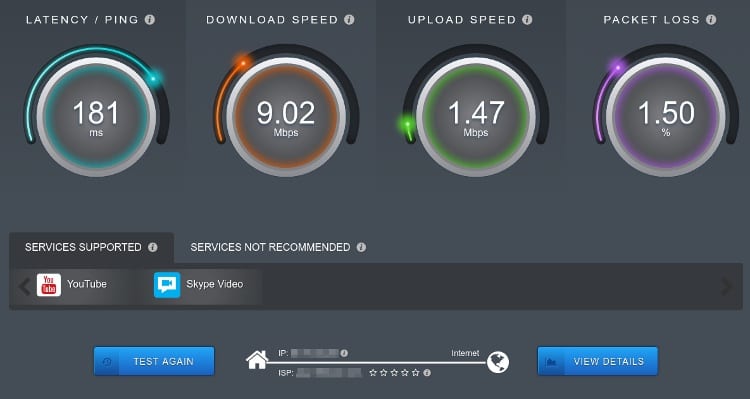Otro test de velocidad de nuestra conexion, pero esta vez de la mano de un lugar de software libre, SourceForge.
La diferencia con otros servicios similares es que no requiere de ningun plugin/addon, debido a que utiliza solamente codigo HTML5, asi que cualquier navegador web HTML5 puede utilizarlo. El test de velocidad puede darnos no solamente la velocidad de subida y bajada, sino otros parametros como paquetes perdidos o latencia de la conexion entre otros.
https://sourceforge.net/speedtest Internet Speed Test SOurceForge
Internet Speed Test SOurceForgeWelcome to the SourceForge Speed Test. This speed test is uniquely designed to test your current Internet connection speed for Latency/Ping, Jitter, Download Speed, Upload Speed, Buffer Bloat, and Packet Loss. Upon completion, you will be notified as to what types of services your connection is capable of handling, as well as additional reports about your connection. This HTML5 speed test does not require Flash or Java, and works on all devices including tablets and smartphones. Please click the 'Test Now' button below to begin the test! This test utilizes WebSockets for latency, jitter, and buffer bloat measurements. For best results close out other open tabs in your browser and ensure your computer is mostly idle.
What do my test results mean?After running the speed test, you will be presented with a number of results in different formats. But what do these numbers mean? Here is a brief explanation as to what your test results mean in relation to your current broadband connection:
* 1. Latency/Ping: The measurement of the time it takes a single packet to be sent from your computer to a remote computer and then back.
* 2. Jitter: The measurement of consecutive latency test results. Your ideal jitter result is as close to zero as possible.
* 3. Download Speed: Less a measurement of speed, this is how many bits per second can be downloaded from one computer to another via the Internet.
* 4. Upload Speed: Less a measurement of speed, this is how many bits per second can be uploaded from one computer to another via the Internet.
* 5. Buffer Bloat: A measure of latency, it is a test performed when your connection is under stress. This is usually achieved by running a bandwidth test to maximize your connection.
* 6. Packet Loss: The measurement of how many data packets arrive at their intended destination when sent from a computer. Ideal packet loss is zero percent.